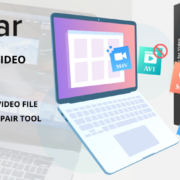
Image Source:- Pexels
While making your own video essays can seem daunting, the truth is that with various layouts, it’s easier than you think. If you follow these five easy steps, you’ll be able to create your own video essay in no time, regardless of your video-making experience level
1) Choose Your Topic
Video essays are all about bringing knowledge, perspective, and inspiration. Choose a topic that’s important to you and go after it. If there’s something specific that you want your audience to take away from your video essay, be sure to make it clear. You may also want to consider choosing a topic that speaks specifically to your community; if you have an existing community, what can you share with them? What do they need or want to know? This is where you’ll find your voice as a video maker. (If you don’t yet have a community, start by creating one for yourself.)
2) Use YouTube Over Other Video Platforms
Although you could use other video-sharing platforms, YouTube’s massive user base and favorable stats make it an obvious choice for video-makers.
The fact that YouTube is free makes it even better. You can use YouTube’s platform to organize all your videos and share them with friends or colleagues. It also includes important analytic tools for understanding what your audience likes about your videos, so you can create more of what they enjoy.
You can use a video maker platform like Promo as well. This will allow you to connect with video makers who specialize in specific verticals and produce videos on demand for your business. They’ll have access to professionally designed templates and stock footage, which will help them get started quickly.
3) Come Up With an Idea
Before you can record your video, you need an idea. What are you passionate about? Chances are there’s more than one answer here, but try to hone it down to a specific topic that really moves you. Decide how long you want your video essay to be: 3-5 minutes is probably ideal, so if it’s shorter or longer than that, it might work better as two or three shorter videos that each get their own mini-essay. You could also decide on a set time limit and see what happens—some of my favourite videos have been accidental ones where I started recording without knowing exactly what I was going to say. Record your video: Once you have all of your ideas written out and know exactly what you’re going to say, start recording! If possible, try not to read off of notes—it will sound much more natural and engaging if you just talk into the camera instead.

Image Source:- Pexels
4) Write Down Some Bullet Points
Write down some bullet points about what should be included and what shouldn’t. Pick a template from YouTube, Vimeo or any other online video makers and use that as inspiration for your own video. Make sure you are following their guidelines about what you can/can’t include before making your video, though. You don’t want any legal trouble! A video maker can help you with all of these things. It might seem like a lot of work but it will save time and effort in the long run if you do it right!
5) Edit the Video
We’re sorry, but there’s no way around it: making good videos means lots of editing. If you don’t have an existing video, spend some time writing down what footage you need. Then, use your favourite photo- or video-editing program to compile clips into a cohesive whole. But if you do have an existing video, start by looking for scenes that can be cut out altogether. Then whittle your footage down to about 10 minutes total. The goal is to keep your viewers engaged without overwhelming them with too much information at once. (If you’re working with a client, they may also have suggestions on how to edit their video.)
With a video maker, you can create professional videos for free with no experience or previous skills required. It’s perfect for sharing on social media, and it’s also an easy way to make money online. Once you sign up, you can upload your videos to YouTube and quickly start generating traffic. You can even earn money from home by making new videos or selling advertising space on your videos.
Final Word
You’ve put together your video, and have reviewed it multiple times. Maybe you even showed it to friends or family members for an honest critique. Now all that’s left is adding some audio so your viewers can hear what you have to say (and they don’t miss any of your jokes). If you decide to include sound in your video, there are several ways of doing so. Each has its own advantages and disadvantages. Which one should you use? It depends on how much time you have and how complex your message is. Also, whether or not you want to pay for professional help.



